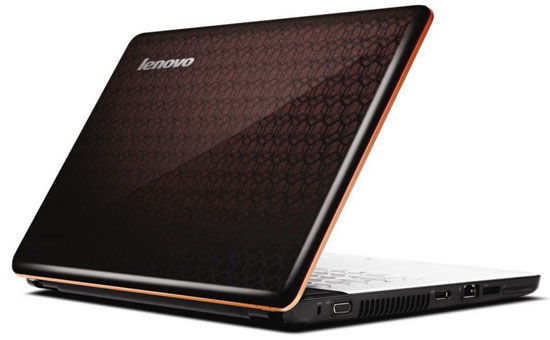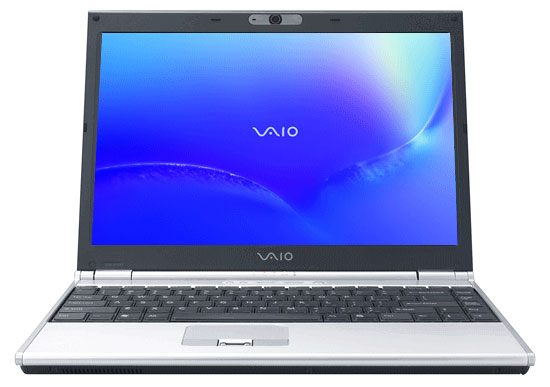Mobile Buyers' Guide, December 2009
by Jarred Walton on December 6, 2009 12:00 AM EST- Posted in
- Guides
Midrange Quad-Core Laptops
For gaming, quad-core CPUs still don't provide enough of a tangible benefit for us to recommend them over dual-core CPUs. On the other hand, anyone interested in video encoding/decoding or other CPU intensive tasks can benefit from a quad-core processor. With the launch of mobile Core i7, the Core 2 Quad CPUs are going the way of the dodo bird right now, so there may be some good deals if you look around. Q9000 systems offer roughly the same performance as i7-720QM systems in highly-threaded workloads, due to their clock speed advantage (2.0GHz vs. 1.6GHz on the i7-720QM), but the i7 CPUs are more flexible thanks to their Turbo modes.

None of the quad-core offerings are thin-and-light laptops; quite the opposite, in fact: most are going to be 17" (give or take) chassis. Looking on the Internet, we could only find a few Q9000 systems that cost under the $1150 limit we've imposed. The least expensive is $1000, listed at Frys.com, but it's "unavailable for Shipping (try in-store pickup)". If you can find one at a local Frys store, the HP dv7-2040us looks like a good deal. If you go straight to the source, the HP Pavilion dv7-2270us appears to be the same product, but with Windows 7 preinstalled and online availability. We just said that quad-core wasn't the best solution for gaming, but the dv7 includes an ATI HD 4650 GPU, which is good enough for most games at medium to high detail on the 1600x900 LCD. There's a $60 instant rebate right now, which drops the price to $1070, so if performance is a higher priority than size and battery life, give it a look.
The only other quad-core Q9000 alternative we could fine right now is the ASUS N61VN-A1, selling for $1100. It's a 16" chassis, but the LCD is only a 1366x768 panel - rather low for such a chassis. It comes with a GeForce GT 240M, which is slightly slower than the HD 4650. Battery life should top out at around 3 hours, according to online reviews.

Of course, Q9000 isn't the only option. We did find a few i7-720QM notebooks for under $1150. The first is probably your best bet in terms of price, the HP Pavilion dv6t 15.6" notebook. It comes with GeForce GT 230M graphics and a 1366x768 LCD. Battery life should be about 90-120 minutes depending on what you're doing (or twice that with the 12-cell battery upgrade), and $1000 is the cheapest price we could find for a Core i7 notebook. Lenovo has a competing notebook with similar specs, the IdeaPad Y550, priced at $1100. It bumps the GPU up to the GT 240M (only a small clock speed bump relative to the GT 230M) and comes with a 500GB HDD and 802.11n - about the same price as the HP dv6t if you add those items.
Any Good LCDs?
We went through our local Walmart, Best Buy, Costco, Target, and Office Max stores to look at the LCDs and build quality. There were enough options that we ultimately decided to forget about build quality (it's a bit too nebulous to assess in a few minutes) and focus on the LCDs. Over fifty laptops were examined, and we found one - yes, ONE! - laptop where the LCD was clearly better than a 300:1 contrast ratio. We were able to test any of the laptops to determine the exact contrast ratio or color accuracy, and there's always the chance that you'll get the same model laptop with a different LCD, but the sole LCD standout in the retail laptop comparison is the Sony VAIO VGN-SR520G/B. We'd guess the LCD we saw was at least a 750:1 contrast ratio, and the blacks were much darker than any of the surrounding laptops.

Not sure what the difference is or how to tell of a laptop you're considering has a high contrast ratio? Just walk over to the desktop LCDs and open up a sample image - the sample images on a standard Windows 7 installation will clearly show the difference. Desktop LCDs will still have better color accuracy and viewing angles (with a few exceptions), but contrast ratios below 500:1 should be immediately visible to the naked eye.
As far as the Sony VAIO VGN is concerned, the other specs are reasonable. You get a P8400 CPU, GMA 4500MHD graphics, 4GB DDR2, 500GB HDD, DVDRW, 802.11n, and a 13.3" 1280x800 LCD. We've also heard some complaints about the 16:9 aspect ratio LCDs, so some of you will undoubtedly be happy with this 16:10 display. Battery life is listed at 5.5 to 7.0 hours (closer to 5.5 for Internet surfing would be our guess), and the VAIO tips the scales at just 4.3 pounds. If you're looking for an alternative to the ASUS UL80Vt and you want a better LCD, this is the only laptop we could find that's worth consideration. What you end up doing is paying about $100 for a better LCD, which is a reasonable expense in our opinion.










49 Comments
View All Comments
JarredWalton - Monday, December 7, 2009 - link
I've placed an order... I'll do a review if they work well.yacoub - Sunday, December 6, 2009 - link
http://i.i.com.com/cnwk.1d/i/bto/20091118/by-manf....">http://i.i.com.com/cnwk.1d/i/bto/20091118/by-manf....I can't find the initial article anymore but this just came out a couple weeks ago.
http://news.cnet.com/8301-17938_105-10400447-1.htm...">http://news.cnet.com/8301-17938_105-10400447-1.htm...
HP had the most quality issues, Asus the least.
Blahman - Sunday, December 6, 2009 - link
If you thought the UL80Vt was good, check out its newer slimmer brother: the UL30Vt. It shares all the same specs, but better build quality and all packed into a thinner, lighter chassis.It's available from Amazon for $800. The reviews so far are very positive.
http://www.amazon.com/UL30Vt-X1-13-3-Inch-Laptop-W...">http://www.amazon.com/UL30Vt-X1-13-3-In...ctronics...
trickdaddy111m - Tuesday, December 8, 2009 - link
The UL30Vt does look very nice, but it lacks discrete graphics and the Turbo function of the UL80Vt. So, "same specs" is not accurate.KikassAssassin - Wednesday, December 9, 2009 - link
The UL30Vt has turbo and the discrete graphics. The specs are exactly the same as the UL80Vt except it has a 1" smaller screen, no optical drive, and a slightly smaller battery.You're probably looking at the UL30A.
KikassAssassin - Sunday, December 6, 2009 - link
The UL30Vt looks like a really nice alternative if you want something lighter than the UL80Vt and you don't need an optical drive. Unfortunately, the UL30Vt on Amazon is the X1 model that only has a 4400 mAh battery, compared to the UL80Vt-A1's 5600 mAh battery, so it'll only have about 80% of the battery life. The battery life should still be excellent, just not quite as amazing as the UL80Vt'stechwriters4breakfast - Sunday, December 6, 2009 - link
atom 2arrandale
bsoft16384 - Sunday, December 6, 2009 - link
I just want to give another shout out for the Acer 1410. This is an absolutely fantastic notebook for $400.I have the single-core version (Core 2 Solo SU3500, 1.4GHz, 3M cache) so it's somewhat faster on single-threaded code but slower on multi-threaded code than the Celeron SU2300 (1.2GHz, 1M cache). That said, I have no performance complaints about the laptop.
GPU performance is, as you would expect, pretty bad. But it's still dramatically ahead of a GMA950-based netbook (around 5X by my estimations), which makes it fine for playing older titles like Warcraft III, CS 1.6, UT classic or 2004, Quake 3 / OpenArena, Half-Life.
Even WoW runs "OK" on the Acer 1410, as long as you're willing to deal with ~20-30 FPS and a slideshow in Dalaran. But you *can* run it, and it's fine for doing dailies or checking the AH. I have my desktop if I want to play for real.
The keyboard is excellent, except for the page up/down buttons (which are annoyingly above the arrow keys) and home/end (combined with page up / down). Other than those annoyances, the keyboard is full-sized and has the layout that you would expect.
The screen is decently bright; contrast is "OK" but not great, and the viewing angle is lame (but so are most laptops). It's easily better than my ThinkPad T61.
There are some surprises port-wise: the 1410 has HDMI (with 8-channel LPCM audio) and the audio-out port does SPDIF/TOSLINK (with a 3.5mm to TOSLINK adapter), neither of which are common on a $400 laptop.
The WiFi is Intel 5100 802.11n, which is also nice. Ethernet is Atheros, audio is Realtek.
As you would expect with an ULV notebook, the 1410 doesn't really ever get hot, even at 100% CPU / GPU. It's not particularly noisy either, unless you have a defective fan (as my first one from Amazon did).
The 1410 takes forever to charge from empty (2.5 hours if off, 3-4 if on). That's because it uses the same 30W power supply as the Aspire One. On the other hand, the power adapter is very small and decently cheap, both of which are pluses.
Battery life is 5-6 hours, depending on how hard you push the machine. At idle, at minimum brightness, Windows reports over 12 hours, but you can't achieve this in practice. With light web browsing and Flashblock, expect 6+ hours.
The touchpad is Synaptics, and does multi-touch.
This system is the smallest, lightest system that I would consider a 'notebook' rather than a 'netbook'. I considered the HP Mini 311, but it maxes out at 3GB and doesn't support x86-64 or virtualization, plus the Core 2 Solo beats the pants off of the Atom. NVIDIA ION isn't really a whole lot better than the GMA X4500MHD, because the Atom CPU prevents you from playing any modern games anyway and the GMA X4500 does fine for Windows Aero and HD video acceleration.
Two years ago the Aspire 1410 would have cost $2000 and would be called an 'ultralight'. Today it's $400.
Keeir - Wednesday, December 9, 2009 - link
Don't forget its slightly more expensive brotherTimeline 1810T-8
Core 2 Duo (SU7300), 4 Gigs of Ram, Bluetooth, Larger HD, same wieght and battery
Picked mine up for <600 from Amazon (though I see they have ballons to close to 700)
notanakin - Monday, December 7, 2009 - link
Unfortunately this guide came out just a few days too late, but fortunately I'd settled on the Acer 1410 (SU2300) and it's a nice little machine. Certainly fast enough for simple tasks and for my old eyes the screen size is better than the 10.1 inchers.Here's a very useful link to a table of laptops/CPUs/Screen size prepared for the recent PC Show in Singapore where I bought the laptop. Great for doing some quick comparisons.
(Prices are in Singapore $ - about US$1=S$1.4, so the prices are a bit more expensive than in the USA, but they give some discounts off the published price and throw in stuff - I got an external DVD-writer plus a few smaller things with the Acer.)
But how I HATE the glossy screen. Are they cheaper than matte screens or what? I'd gladly pay US$50 more for a matte screen.